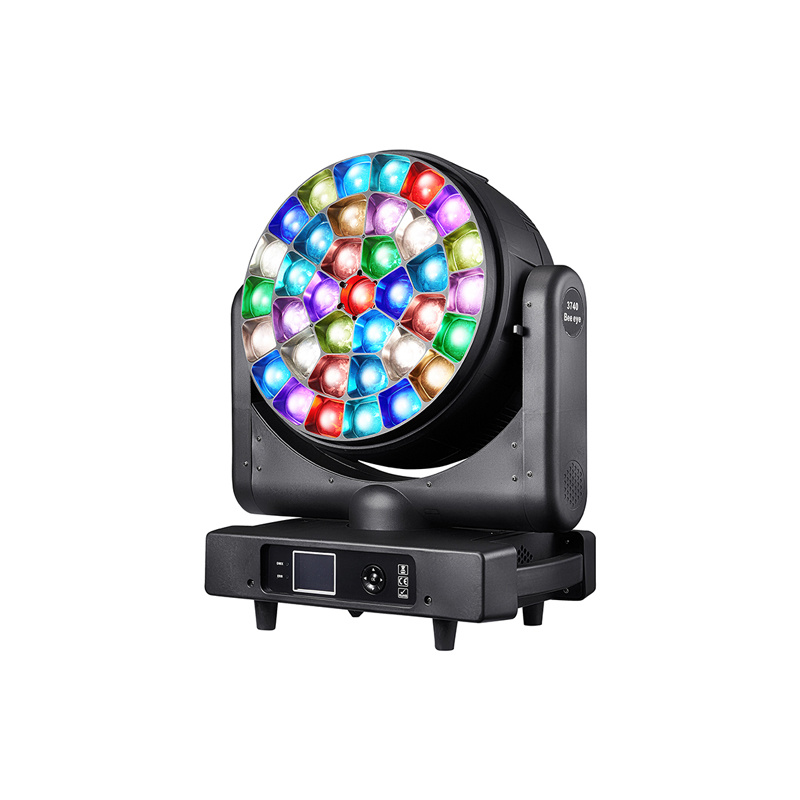Moving Head DJ Lights: The Ultimate Guide for DJs in 2025
Classification:
summary description]
When you’re setting up for a DJ gig, sound might be your priority, but let’s not forget the power of great lighting. In fact, lighting is often what turns a basic setup into a jaw-dropping show. One of the most effective lighting tools available today? Moving head DJ lights.
You’ve probably seen them sweeping across dance floors, casting colorful beams through fog, or pulsing to the beat in sync with your music. But if you're searching for them online, you’re likely wondering: What exactly should I be looking for? This guide has the answers.
What Are Moving Head DJ Lights?
In simple terms, moving head lights are intelligent lighting fixtures that can spin, swivel, flash, and change color—automatically or under your control. Unlike static lights, they move on both the pan and tilt axes, which gives them a much wider range and far more dramatic impact.
They come in different types too—beam, spot, and wash—each designed for different effects. These lights are a favorite among club owners, mobile DJs, and event planners for one reason: they make a huge visual statement.
Why Do DJs Rely on Moving Head Lights?
If you’ve ever played a set where the crowd felt disconnected, lighting might’ve been the missing link. Moving head DJ lights help you build energy, highlight moments, and sync your visuals with your sound. They’re not just decoration—they’re part of your performance.
Some key benefits:
- Dynamic movement keeps the audience engaged
- Multiple effects like gobos, strobes, zoom, and color changes
- Sound-activated modes for simpler gigs
- DMX control for pros who want full command
And the best part? Many models today are compact and travel-friendly. Whether you’re spinning in a small bar or headlining a wedding, these lights fit in—literally and creatively.
Real Questions from Real DJs (And How to Answer Them)
When people search for “moving head DJ lights,” they’re often trying to solve very practical problems. Let’s tackle a few:
“Do I need beam, spot, or wash lights?”
Good question—and it depends on the vibe you're going for.
- Beam lights: Sharp and focused, perfect for cutting through fog or creating dramatic effects in nightclubs.
- Spot lights: Offer more control with gobos and color wheels. Great for pattern projection and highlighting.
- Wash lights: Spread light broadly. Ideal for soft, ambient stage lighting or filling a room with color.
Want the full effect? Combine two types—many DJs pair beam with wash for layered lighting.
“How many moving heads are enough?”
This really depends on your audience size and venue:
- Small gigs (under 100 people): Start with 2 to 4
- Mid-size events (up to 300 people): 4 to 6 is solid
- Large-scale venues: Go for 8 or more with DMX programming
You don’t have to get everything at once. Build your rig over time.
“I’m not a lighting tech. Can I still use them?”
Absolutely. While DMX control allows full customization, many models also include:
- Auto mode for plug-and-play use
- Sound-activated settings that respond to your music
- Simple LCD menus for quick setup
Mounting them is just as easy. Most units come with brackets to hook onto trusses or stands.
“What should I look for before buying?”
Don’t just go for the cheapest option. Look at:
- LED wattage (higher wattage = brighter output)
- Pan/tilt range (more movement = more coverage)
- Effects like gobo wheels, prism rotation, and strobes
- Cooling systems to prevent overheating
- DMX channels—more channels give you more control
Best Uses for Moving Head DJ Lights
There’s no one-size-fits-all approach. But here are a few examples to inspire you:
- Club gigs: Beam lights cutting through haze, synced to drops.
- Weddings: Soft color washes during the first dance.
- Outdoor events: Waterproof units lighting up the stage.
- Mobile DJs: Compact, foldable fixtures with padded cases.
These lights are tools, not toys. The more creatively you use them, the more memorable your performance becomes.
A Few Last Tips
Before hitting “buy,” here’s what else to keep in mind:
- Watch demo videos to see real effects.
- Compare reviews—reliability matters.
- Check what’s included (power cable, DMX cable, case?).
- Think long-term: choose lights that grow with your gigs.
Final Thoughts
Adding moving head DJ lights to your setup isn’t just about looking cool—it’s about creating moments your audience won’t forget. Whether you’re just starting or upgrading your show, investing in quality lights pays off every time the beat drops.
Previous Page
More Cases



